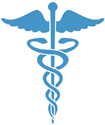For Such A Time As This: The Potential For Healthcare Marketing
January 4, 2017
 Ram Trucks recently ran a commercial celebrating the blue-collar American and the grueling work they undertake to make ends meet for themselves and their family. The stirring music, arresting visuals, and compelling copy wrapped together to evoke an appreciation for an oft-overlooked demographic by the mainstream media.
Ram Trucks recently ran a commercial celebrating the blue-collar American and the grueling work they undertake to make ends meet for themselves and their family. The stirring music, arresting visuals, and compelling copy wrapped together to evoke an appreciation for an oft-overlooked demographic by the mainstream media.
In spite of the stirring sentimental feel-good message Ram tried to convey, the criticism that percolated in social media was clear, that the commercial did not reflect the real-life diversity of blue-collar workers. No matter the reason Ram had for choosing to reflect a certain type of blue-collar worker, they missed an opportunity to tell a story that could shape and change perceptions, i.e., to use their platform not only to tell a stirring story, but also to do greater good.
Healthcare marketing is not automobile marketing but there is something we can learn from the Ram campaign. How can we create campaigns that go beyond the ephemerally provocative, to those that create legacy? How can we use our unique platform to do good? As healthcare marketers, our potential for making a lasting impact is actually higher than those working on non-healthcare brands, because our consumers do not simply interact with our brands; healthcare brands truly impact customers’ life and wellness in physical, emotional, and highly personal ways. A truck can make you feel a lot of things – but it won’t lower your blood sugar.
Many would agree that healthcare consumer marketing is tough. There are a lot of constraints in what we can say. And we are working against a backdrop of greater skepticism towards big pharma. According to the annual Gallop poll surveying Americans perceptions of the top 25 business sectors in the U.S., the average American’s view of the pharmaceutical industry has declined over the past three years. And negative pharma-related press has a tendency to trend on social media, whether it’s the deplorable CEO behind Turing Pharmaceuticals who raised the price of an infectious disease drug by 5,000% overnight, or the legitimate concern over price collusion by insulin makers. As healthcare marketers, we are limited in what we can change about the industry but we do have the opportunity to change perceptions, to show our consumers that we want to put the patient at the center of all we do.
So what examples do we have to turn to? Plenty. One branded campaign discussed at the Effie Awards judging debrief was Similac’s “Sisterhood of Motherhood” campaign. It tapped into a human truth that brought together moms who have many different beliefs on how best to raise children, and all it took was a little humor and a lot of authenticity. This is just one of many examples of how pharma has used their platform to break stigmas, create conversation and bring people together, hopefully creating a lasting impact.
As we end 2016, let us pause to consider our purpose and potential. Creating meaningful work is something we always strive to do but it is even more imperative given the larger backdrop of skepticism towards pharma and a divisive political climate. Maybe we can learn from the from Ram Trucks’ example and challenge ourselves to think about how we can use our unique space and areas of expertise to change perceptions, heal divisions and to do good. Because what is marketing if it does not challenge our thinking and change behavior? Perhaps the unlikely candidates, pharma companies and marketers, could lead the way.
The author served on the 2016 North American Health Effie Awards jury.
By Gloria Choi, Columnist
About the author: Gloria Choi, vice president, strategic planning director, FCB Health
Courtesy of mediapost




























